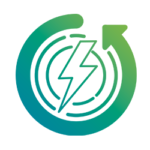
BIOLOGICAL CO₂ STORAGE AND SEQUESTRATION TO MOVE TOWARDS CARBON NEUTRALITY
Carbon dioxide, better known by its molecular formula CO₂, is composed of one carbon atom and two oxygen atoms.
A naturally occurring gas in the atmosphere, CO₂ plays a key role in the carbon cycle on the planet: living beings absorb oxygen and release CO₂ while plants absorb CO₂ and release oxygen.
Carbon dioxide is therefore at the heart of two natural mechanisms: the respiration of living beings and the photosynthesis of plants
The evils of co₂ : a greenhouse gas acting on the climate
The greenhouse effect is a natural mechanism that regulates the temperature of the planet’s surface. Without it, the average temperature on Earth would be -18°C, whereas it is 15°C.
However, this balance has been undermined by human activities, known as anthropogenic activities, over the last 150 years. CO₂ is not the gas with the greatest impact on the greenhouse effect. Some gases have GWP (Global Warming Potential) of nearly 300, or even up to several tens of thousands. CO₂ was chosen as a reference, thus a GWP of 1, because it represents almost 77% of our emissions.
At the COP21 in Paris in 2015, almost all the world’s states committed to containing the rise in temperatures to + 2°C by 2100, or even to 1.5°C.
Towards carbon neutrality
When updating the National Low-Carbon Strategy (SNBC) in 2018-2019, the French state set the goal of aiming for carbon neutrality by 2050.
Since COP21, many companies have publicly announced their decarbonation objectives to contribute to the carbon neutrality of the planet. The levers for action are energy efficiency, the migration of consumption to renewable energies and carbon storage to voluntarily offset the balance of greenhouse gas emissions.
The solutions that make it possible to offset, in part or in full, the greenhouse gas emissions that could not be avoided must meet the following criteria :
- Measurable
- Additional
- Permanent
- Verifiable
This voluntary offsetting approach is based on the fact that a given quantity of greenhouse gas emissions in one place can be offset by absorbing or reducing an equivalent quantity of emissions in another place.
Carbon neutrality or net zero emissions
A company moving towards carbon neutrality must implement a carbon offset plan to sequester all of its residual greenhouse gas emissions. At the same time, the company must maintain a permanent reduction plan to continue to reduce its residual emissions.
For Orygeen, carbon offsetting is part of a strategy to move towards carbon neutrality of a company’s activities.
First of all, a company’s direct and indirect emissions (scope 1 & 2) must be reduced by :
- consuming less energy
- making the transition to renewable energies from optimised energy consumption
before offsetting the transitional and/or final balance of emissions.
Scope 3 indirect emissions include transport, purchase of raw materials, travel, etc. They are also part of the strategic roadmap and are often addressed at a later stage.
A transparent and disintermediated approach to voluntary carbon offsetting
Orygeen guarantees transparency in the value chain and ethics in the remuneration of actors: fair remuneration of upstream actors, especially in the context of international carbon credits, while using certified methodologies.
Gold Standard
The Gold Standard was established in 2003 by WWF and other international NGOs to ensure that projects that reduce carbon emissions have the highest levels of environmental integrity and also contribute to sustainable development. With the adoption of the Paris Climate Agreement and the Sustainable Development Goals, we launched a best practice standard for climate and sustainable development interventions, Gold Standard for the Global Goals , to maximise impact and create value for people around the world and the planet we share.
The low carbon label
Created in 2019 by the French public authorities, this label aims to quantify carbon emission reduction projects. It thus gives visibility and funding to innovative and environmentally friendly projects in France. The low-carbon label also provides quantified assessments of the socio-environmental impacts of projects.
Orygeen offers you local carbon emission reductions certified by this highly demanding label.
Orygeen monitors actors and project developers to ensure compliance with recognised ethical and technical standards (including additionality and legality).
Why call on Orygeen ?
Orygeen reduces the number of intermediaries with the objective of :
- control the conditions of the certificates in order to guarantee the reality and ethics of the projects,
- guaranteeing a fair cost for the client that corresponds to the value of the carbon emission reduction
The projects proposed by Orygeen, both locally and internationally
- work for the environment by having a positive impact on biodiversity, water and soil,
- have socio-economic co-benefits : poverty alleviation, improvement of living conditions, economic development, improvement of infrastructure.
Local offset programmes have a positive impact on the local environment and our territories.
Local offsetting programmes at the international level, sometimes outside the scope of the companies’ activities, make it possible to offset at a lower cost while maintaining an assurance of positive impacts.
Orygeen can also co-construct a specific and tailor-made programme, locally and/or internationally, to perfectly match the expectations and values of a company.







